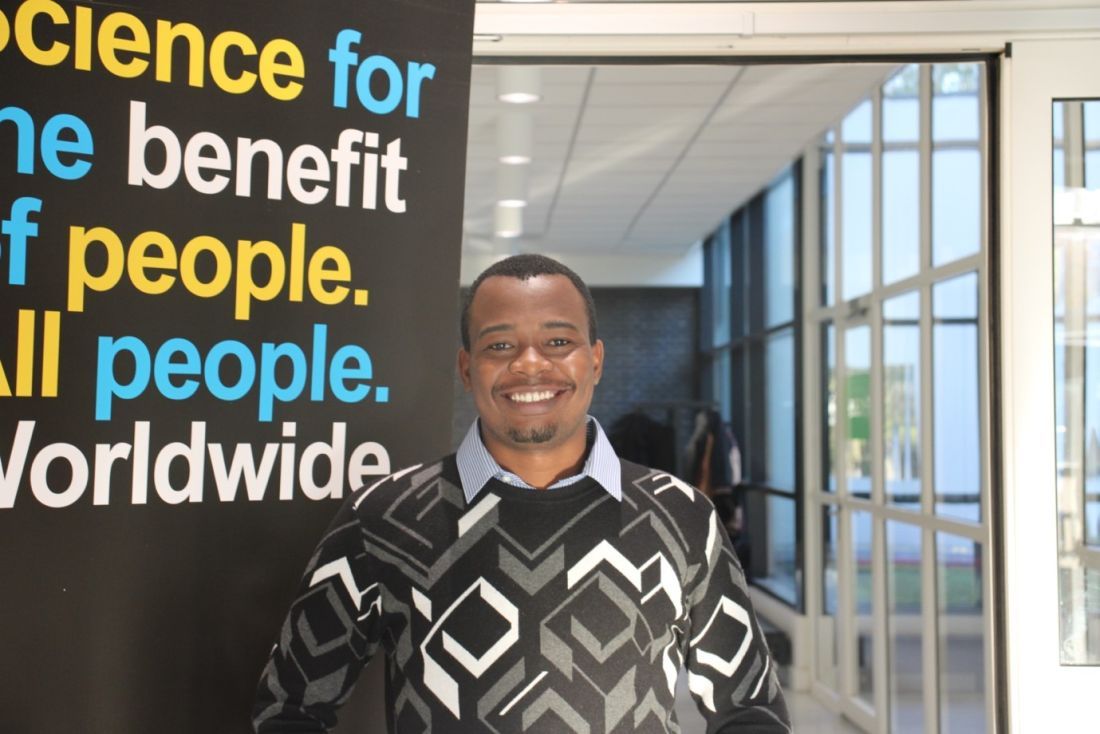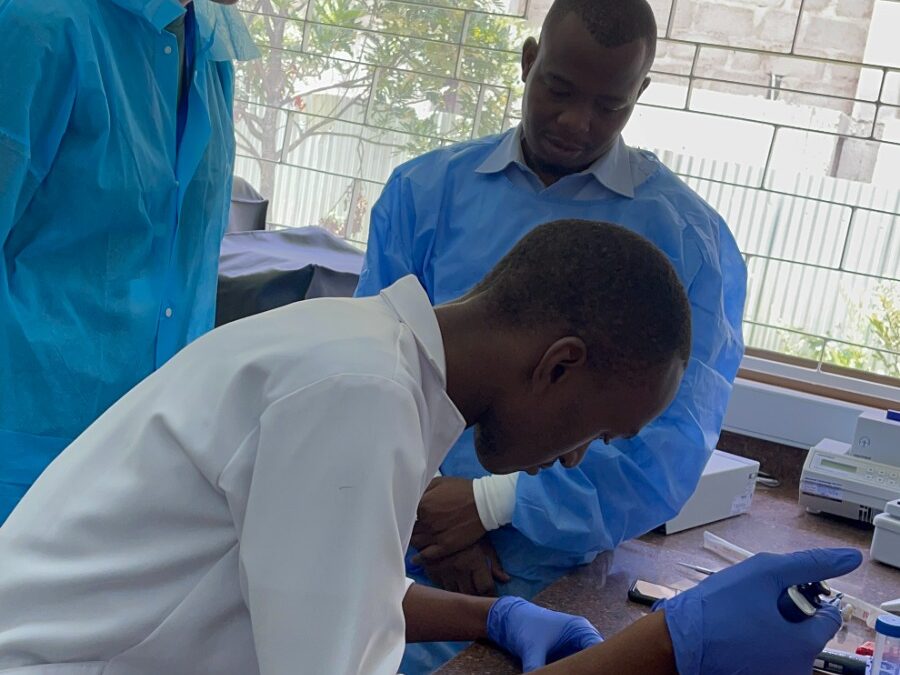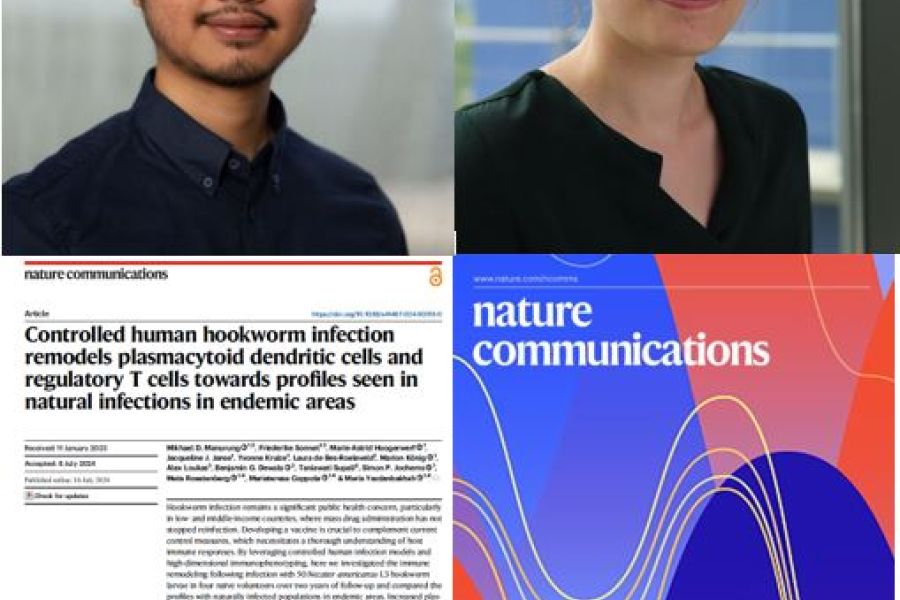Dr. Jeremia J. Pyuza: From Scientific Collaboration to Community Impact in Tanzania

Created on:
In the third edition of our “Faces Behind LUMC Global” interview series Dr. Jeremia J. Pyuza, a medical doctor and laboratory scientist, tells us the inspiring story of his journey from Tanzania to the Netherlands. Through his passion for research, he is committed to making an impact within rural and urban communities of his home country Tanzania.
A chance meeting was the beginning of his career path taking a significant turn in 2017 when he met Prof. Pancras Hogendoorn, former LUMC Dean, who was visiting the Kilimanjaro Christian Medical Centre (KCMC) Pathology Department in Tanzania to assist with capacity building. At that time, Jeremia was working as a laboratory scientist and simultaneously pursuing his medical degree. Prof. Hogendoorn recognized his potential and introduced him to Prof. Maria Yazdanbakhsh, a researcher deeply interested in infectious diseases in low and middle-income countries. This introduction marked the beginning of a fruitful collaboration. Jeremia’s initial project involved screening primary school children for schistosomiasis, a parasitic disease. Utilizing point-of-care tests, he discovered that the prevalence remained high at around 20%. These significant findings led to his first visit to the Netherlands in 2019, where he presented his results and joined the LUMC Global program.
Crossing borders
While his initial work focused on parasitic infections and mucosal immunity, Jeremia’s research evolved to explore vaccine responses in Tanzanian populations. He noted a disparity in vaccine efficacy between high-income and low and middle-income countries, such as the malaria vaccine’s reduced effectiveness in Tanzania. This led to a new research protocol using the yellow fever vaccine as model to study immune responses to vaccines among rural and urban population in Tanzania, where he worked together with Marloes van Dorst on their Ph.D. projects, under the supervision of Prof. Maria Yazdanbakhsh. Jeremia faced numerous challenges, particularly adapting to the high standards and advanced techniques at LUMC. He had to familiarize himself with sophisticated technologies previously unknown to him such as flow cytometry and mass cytometry, and advanced data analysis. Despite these obstacles, his determination and adaptability allowed him to excel since he speaks the language of both the clinicians and the laboratory scientists. As he states: “Combining medical and laboratory sciences broadened my perspective. I can cross the border; I can talk to different people. I can see the value of every person within the institution.”

A critical aspect of Jeremia’s work involved extensive community engagement. With the help of local experts and colleagues, including Prof. Sia Msuya, Dr. Anastazia Ngowi, Dr. Elichilia R Shao, and Dr. Alex Mremi, Nikutufye Andongolile, and George Masisila, he spent six months educating communities about immunology and the importance of their participation in research, especially vaccine-related research, which received intensive resistant due to COVID-19. This groundwork was essential to gaining trust and ensuring successful data collection during pilot studies among rural and urban various Tanzanians.
Connecting through cross-cultural and scientific experiences
Jeremia can be considered the pioneer in setting up the collaboration between KCMC and LUMC. This partnership has grown significantly, now involving multiple Ph.D. students and numerous LUMC students participating in exchange programs in Tanzania. The collaboration enriches both institutions, providing valuable cross-cultural and scientific experiences.
With less than a year left in his Ph.D. program, Jeremia remains committed to strengthening the collaboration between KCMC and LUMC. He envisions a future where this partnership continues to thrive, supported by passionate leaders from KCMC and LUMC by sustaining continuous funding and engagement. Jeremia hopes to see more students benefit from this collaboration, fostering a new generation of global health researchers. As he puts it: “LUMC Global is not just funding my project; it is connecting me to mentors and a global community of young scientists. That’s invaluable.”
Jeremia suggests further improvements for the LUMC Global program, such as regular lectures and discussions among global students, creating a robust network among LUMC Global fellows that encourages collaboration and joint research projects. These initiatives would help sustain the momentum of the program and enhance its impact. His work thus not only contributes to scientific knowledge, but also inspires young scientists in both Tanzania and the Netherlands, paving the way for future breakthroughs in global health.
More news & updates
Breakthrough Research Unveils New Insights into Hookworm Immunity
We are excited to announce the publication of the latest joint research between Universitas Indonesia and Leiden University Medical Center in Nature Communications!
LUMC FAIR data-training Summercourse 2024
19 – 28 august 2024
Leiden University Medical Center and Online
FAIR Data, FAIR Africa -Internationalisation of the Health Data Space
27 August 2024, 09:00 – 18:30
Leiden University Medical Center
Join us in this exciting Conference on ‘FAIR Data, FAIR Africa – Internationalisation of the Health Data Space!’
We are happy to announce keynote speaker H.E. Fortune Charumbira, President of the AU Pan African Parliament who will speak about “Empowerment through Digital Data Ownership in Africa”.


